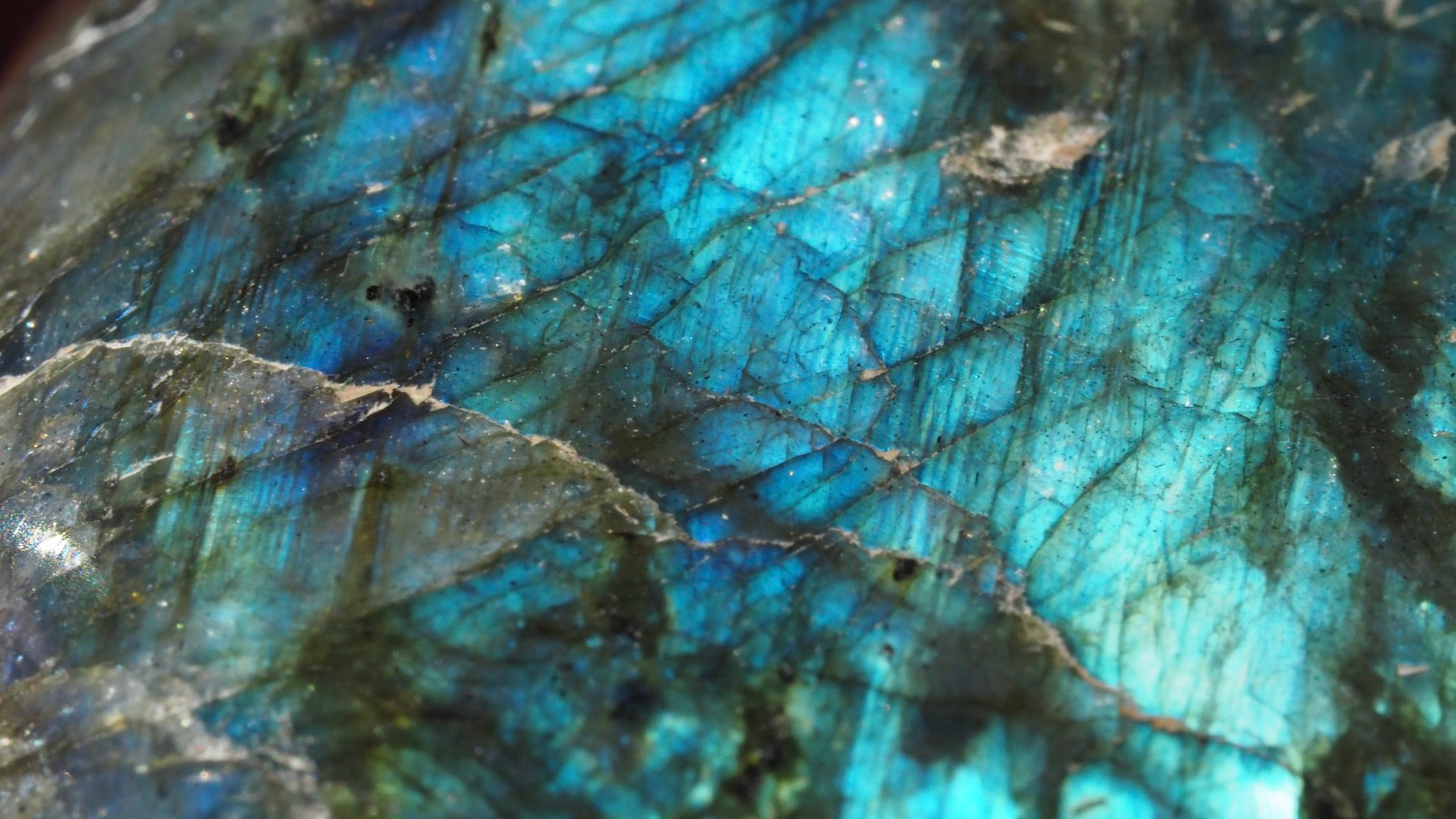
Labradorite: The Gemstone of Northern Lights and Ancient Magic
When light catches labradorite just right, it flashes an unexpected rainbow of color—fiery blues, greens, golds, and sometimes even purples. This magical glow, known as labradorescence, is what sets this stone apart from any other. But labradorite’s allure isn’t just visual—it carries with it a rich history, fascinating origins, and a mystical reputation that stretches across centuries and cultures.
Whether you’re drawn to its iridescent shimmer or intrigued by its metaphysical meaning, labradorite is a stone that tells a story—and not just any story, but one filled with fire, folklore, and transformation.

The Discovery of a Northern Wonder
Labradorite was officially "discovered" in 1770 on the Isle of Paul in Labrador, Canada—hence the name. But local Inuit people had long admired the stone, believing it to be the frozen fire of the Aurora Borealis, trapped in rock. According to legend, a warrior struck the stone with his spear, releasing the Northern Lights into the sky—though some remained forever embedded in the stone.
Later, labradorite was also found in Finland, where a variety with especially vibrant flashes—called spectrolite—was unearthed during World War II. Today, the gem is mined in locations across the globe, including Madagascar, Russia, Mexico, India, and the United States.
A Gem With Layers—Literally
Labradorite is a member of the feldspar family, which includes moonstone and sunstone. What makes it so visually enchanting is its crystalline structure: thin, tightly packed layers within the stone scatter light, creating the shifting colors we see on the surface.
Most labradorite is gray to dark gray in its natural state, but when polished and viewed at the right angle, it flashes with brilliant hues. This optical phenomenon is not due to color, but to light interference—making it a true spectacle of physics as much as nature.
More Than Just a Pretty Flash
Labradorite is often called a stone of transformation and is popular among those who explore the spiritual and healing properties of gems. Believers say it enhances intuition, protects against negative energy, and supports self-discovery and inner growth.
In crystal lore, labradorite is associated with the third eye chakra, stimulating mental clarity and insight. Shamans and healers have used it as a tool for spiritual connection, believing it bridges the seen and unseen worlds.
Whether or not you subscribe to metaphysical meanings, it’s easy to see why labradorite has long been viewed as otherworldly.

A Glimmer in Jewelry Design
Despite its softness (6 to 6.5 on the Mohs scale), labradorite is a favorite among jewelry designers for its unique play of color. It's often cut into cabochons to best showcase its iridescence, though you’ll occasionally find it faceted for added sparkle.
Designers pair it with both sterling silver and gold to enhance its cool or warm tones. Its versatility makes it suitable for statement rings, pendants, earrings, and even beaded necklaces. Because each piece has a unique flash, no two stones are alike—making labradorite ideal for one-of-a-kind designs.
Labradorite vs. Spectrolite
Though often used interchangeably, spectrolite refers specifically to the Finnish variety of labradorite that boasts a full spectrum of color. While standard labradorite often leans blue or green, spectrolite can display reds, oranges, and violets—colors rarely seen in other sources.
This makes spectrolite a prized variety among collectors and gem enthusiasts, especially since Finnish mines are more limited in production.

Historical and Cultural Significance
Labradorite’s mystical appearance meant it was sometimes confused with other mythical substances. In ancient Europe, it was believed to be related to celestial events or alchemical transformation. Its glowing interior made it a symbol of hidden truth and spiritual insight.
In addition to Inuit legends, Native American tribes along the Canadian coasts used labradorite in ceremonial tools and spiritual practices. In metaphysical circles today, it’s still considered a protector stone, shielding one’s aura from negativity and stress.
Caring for Labradorite
Due to its moderate hardness, labradorite is best used in earrings, pendants, and occasional-wear rings rather than daily-wear items like engagement rings. To clean it:
-
Use warm, soapy water and a soft cloth.
-
Avoid ultrasonic or steam cleaners.
-
Store it separately to prevent scratches.
-
Keep it away from harsh chemicals or extreme heat.
Its beautiful surface can dull over time if not cared for properly—but a quick polish can often restore its flash.
Final Thoughts: A Stone That Never Stops Surprising
Labradorite is more than a beautiful gem—it’s a reminder that there’s magic hiding in the ordinary, waiting to be revealed when the light hits just right. Whether you're wearing it for its spiritual energy or simply for its beauty, labradorite invites you to see beyond the surface and discover what shimmers beneath.
If you're looking to add something mystical, meaningful, and utterly unique to your jewelry collection, labradorite is a gem worth knowing—and wearing. All our labradorite jewelry is one of a kind. Browse our collection online or stop in store.
